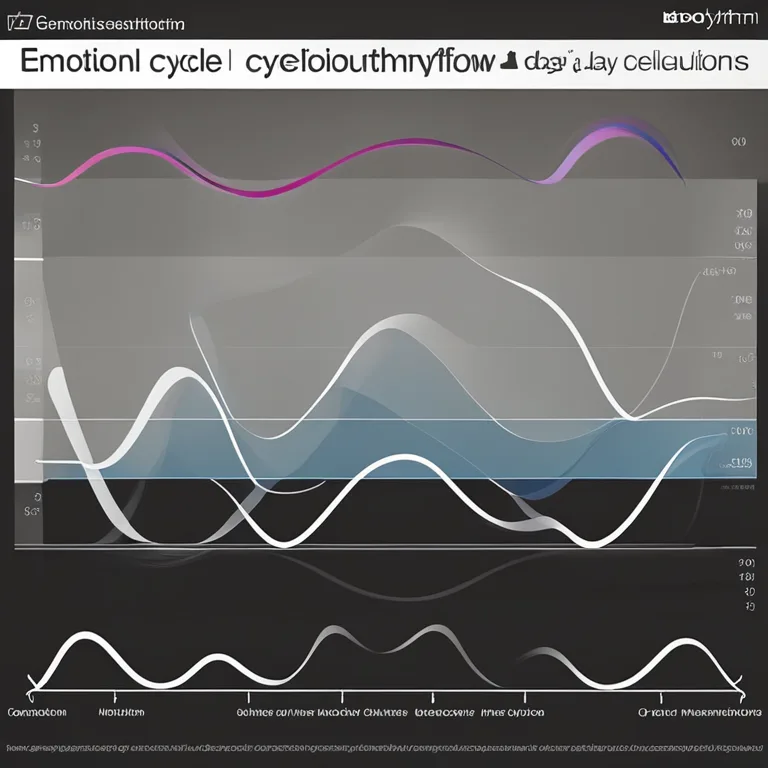
The Dynamics of Biorhythm Cycles
Discover how biorhythm changes affect physical, emotional, and intellectual states, and how to potentially leverage this knowledge for well-being.
article by Adrian Wallace
Biorhythms: An Introduction
Have you ever wondered why on some days you feel on top of the world, while on others you can't seem to muster the energy to face your tasks? The concept of biorhythms may offer some insights into the fluctuations of our physical, emotional, and intellectual capacities. Rooted in a hypothesis that suggests our lives are governed by biological cycles, biorhythm theory posits that from the moment of our birth, we navigate three distinct cycles: physical, emotional, and intellectual. Every cycle has a specific rhythm and duration, and being aware of these can in theory, help us anticipate our highs and lows, optimizing life's tasks accordingly.

Physical Biorhythms on the Move
Physical biorhythms operate on a 23-day cycle and relate to our bodily strength, stamina, and overall health. When the cycle is in a positive phase, one often feels full of energy and more willing to engage in physical activities. Conversely, during the negative phase, the body might feel sluggish and less dynamic. These cycles are believed to fluctuate in a sine wave pattern, with days of crossing the baseline indicating a time of transition and a need for caution in physical activities to prevent potential mishaps.

Emotional Cycle Fluctuations
The emotional biorhythm, with a 28-day cycle, corresponds to our mood swings, feelings, creativity, and perception of the world around us. When the emotional curve trends upward, individuals may experience a period of heightened creativity, stable mood, and an optimistic outlook. As it descends, this cycle can lead to emotional instability or a pessimistic demeanor. Understanding the pattern of this cycle could aid in better handling emotions and interpersonal relationships.

Intellectual Rhythms of the Mind
The mind's agility and cognitive functions are said to be influenced by the intellectual biorhythm, which has a 33-day cycle. Peak periods within this cycle could enhance problem-solving abilities and concentration, making it a favorable time for intellectual endeavors. During the low phases, you might find learning new information or performing mental tasks to be more challenging. Timing challenging mental activities with the ebb and flow of this cycle could potentially improve productivity and learning outcomes.

Calculating Your Biorhythms
While the theory of biorhythms is not supported by empirical evidence and remains controversial in the scientific community, interest in personal rhythms persists. Numerous online tools and software have emerged, promising insights based on biorhythm calculations. These modern applications take a user's date of birth as a starting point and project the theoretical patterns of the biorhythm cycles. By interpreting these cycles, users aim to make informed decisions or practice caution during critical periods in their respective cycles.
Practical Applications and Criticism
Despite the fascination with biorhythms, it's important to approach this concept with a healthy dose of skepticism. Critics assert that biorhythm theory lacks scientific backing and warn against using it as a sole guide for decision-making. However, some proponents believe that tracking biorhythms can promote a greater understanding of one's body and mind. While it may not be an exact science, the practice of observing personal cycles could foster mindfulness and self-reflection, key components in personal growth and well-being.
Future Considerations
Looking forward, the field of personalized health and wellness continues to evolve, and with advancements in biometry and data analytics, it's conceivable that our understanding of personal cycles could deepen. Futuristic approaches to biorhythms might incorporate AI and machine learning to analyze patterns in our physiological and psychological data, offering tailor-made advice for optimizing performance and health. Nonetheless, such analysis should always be coupled with established medical knowledge and individualized care.
Published: 12/28/2023
Modified: 12/28/2023
More predictions
Come back here soon to learn more about yourself and your future


The Intricacies of Biorhythm Charts
Delve into the world of biorhythms with our concise guide on understanding biorhythm charts and how they might influence your daily life.


Biorhythm Basics: Patterns of Life's Vital Rhythms
Explore the intriguing concept of biorhythms and how they exemplify distinct cycles impacting physical, emotional, and intellectual states.


Measuring Your Biorhythms: A Step-by-Step Guide
Discover how to track and measure your biorhythms to better understand your physical, emotional, and intellectual cycles for optimal well-being.